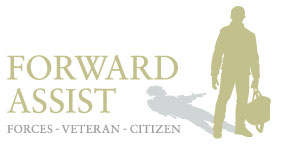The Officer Advantage: Why UK Military Charities Favour Leadership from the Top Ranks
/Military charities in the UK exist to serve those who have served. Whether offering mental health support, financial aid, or reintegration programmes, these charities are vital lifelines for veterans and their families. But beneath the surface of their noble missions lies a stark reality: military charities seem to favour CEOs who are former officers rather than those who come from the enlisted ranks.
This phenomenon isn’t just a coincidence; it’s a reflection of deep-rooted hierarchies that extend beyond the armed forces and into the civilian sector. Former officers, particularly from the higher echelons of command, appear to have a distinct advantage when it comes to securing leadership positions within military charities. Meanwhile, enlisted personnel, those who have often faced the hardest struggles post-service rarely find themselves at the helm of these organisations. So, why does this happen? And more importantly, what does it say about the broader culture of military charity governance in the UK?
One of the most obvious reasons for this officer bias is the persistence of the Old Boys’ Network, a powerful and often unspoken system of connections that exists within elite institutions. Many former officers, especially those from Sandhurst or other prestigious military academies, maintain strong relationships with influential figures in business, government, and the non-profit sector.
These connections provide them with fundraising advantages, media visibility, and access to wealthy donors, all of which are critical for running a successful charity. When it comes to selecting a CEO, trustees (who are often former officers themselves) naturally gravitate towards familiar faces, reinforcing the cycle of officer-led leadership. Meanwhile, enlisted personnel, despite often having first-hand experience of the struggles that charities aim to address, are less likely to have these high-level connections. Their networks may be rich in camaraderie and ground-level support but lack the financial and institutional pull needed to rise to the top of these organisations.
Another factor at play is the perception of leadership ability. Officers are trained from the beginning of their careers to be decision-makers, strategists, and public-facing representatives. Their roles often involve high-level planning, diplomacy, and commanding large units, which can be seen as transferable skills for running a charity. Enlisted personnel, on the other hand, are frequently viewed (sometimes unfairly) as "implementers" rather than "visionaries." Despite their operational expertise, resilience, and problem-solving abilities, they are often overlooked for executive positions because they don’t fit the traditional profile of a corporate, style leader. This bias is evident not just in charities but across many sectors, where former officers transition seamlessly into high-paying executive roles, while enlisted veterans struggle to get past middle management.
In the charity sector, perception is everything; especially when it comes to fundraising. A former Brigadier or Colonel at the helm of a military charity instantly adds credibility in the eyes of high-net-worth donors, corporate sponsors, and even government officials.
This is partly because officers are trained in public speaking, strategic networking, and institutional diplomacy. They’re used to dealing with politicians, journalists, and corporate leaders, which makes them more effective at securing funding. Conversely, an enlisted veteran, no matter how competent, may lack the same polish or access to influential circles. The reality is, charities are businesses in their own right, and those who can bring in the most money often rise to the top.
This officer-dominated leadership structure raises an important question: do these charities truly represent the people they claim to serve? Most military charities exist to support those who are struggling the most post-service, and in many cases, this means enlisted veterans rather than former officers. Enlisted personnel make up the majority of the armed forces, and they are disproportionately affected by issues like PTSD, homelessness, and unemployment when military service ends.
Yet, when the leadership of these charities is overwhelmingly composed of former officers, there’s a risk that decision-making becomes detached from the realities of those most in need. While many former officers are deeply committed to supporting veterans, lived experience matters, and enlisted veterans often have a closer understanding of the struggles that frontline personnel face after leaving the military. Without diverse representation at the leadership level, military charities run the risk of prioritising what looks good on paper over what actually works in practice. To create a more equitable system where enlisted veterans have the same opportunities as their officer counterparts, several changes need to happen. Charity boards should actively recruit from diverse military backgrounds rather than relying on the same officer heavy networks. This means recognising that leadership skills come in many forms, not just those associated with officer training.
Many enlisted veterans have the potential to be exceptional CEOs, but they often lack access to the same career development resources as officers. Charities should invest in mentorship programs, executive training, and leadership development initiatives aimed specifically at enlisted personnel transitioning to the non-profit sector. Funders, donors, and policymakers need to challenge the notion that only officers can run successful military charities. Stories of enlisted veterans leading impactful initiatives should be amplified to reshape public attitudes. Military charities should be more transparent about their hiring and leadership selection processes. Publishing diversity reports that highlight the backgrounds of their leadership teams can help drive awareness and accountability.
In summary, the preference for officer-led leadership in UK military charities isn’t just an accident, it’s a reflection of institutional biases, old networks, and entrenched perceptions of leadership. While former officers undoubtedly bring valuable skills to the table, it’s time to recognise that leadership is not the sole domain of the commissioned ranks. For military charities to truly serve their mission, they must break free from the rigid structures of the armed forces and embrace a more inclusive, representative approach to leadership. Until then, enlisted veterans, the very people these charities exist to support, will continue to find themselves overlooked at the highest levels. It’s time for a change.
Tony Wright CEO Forward Assist





